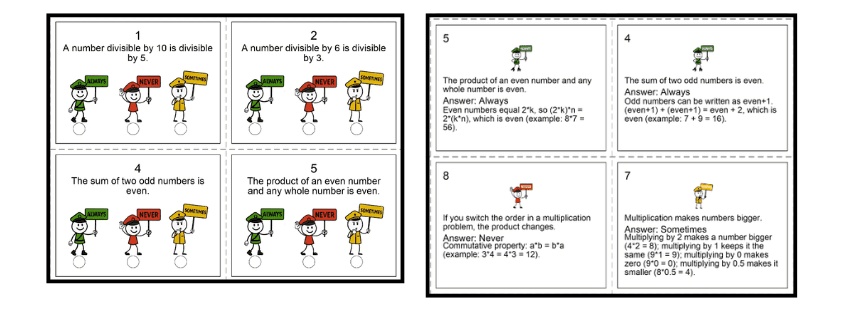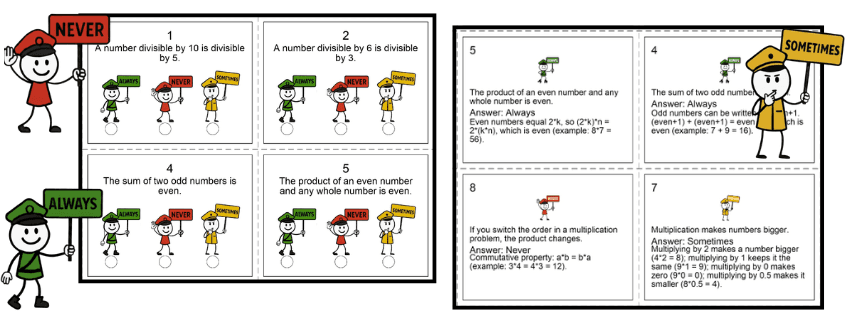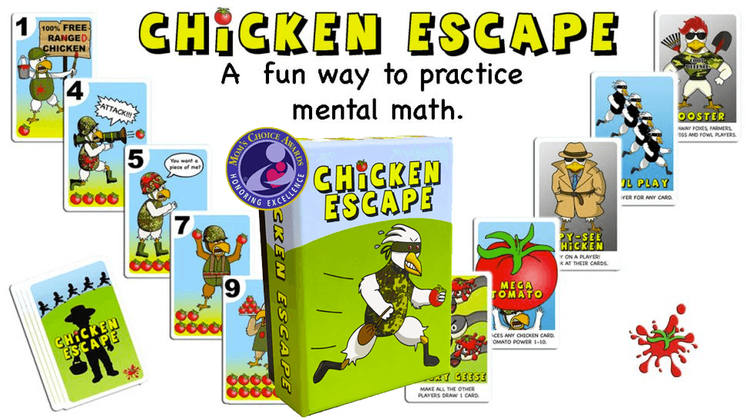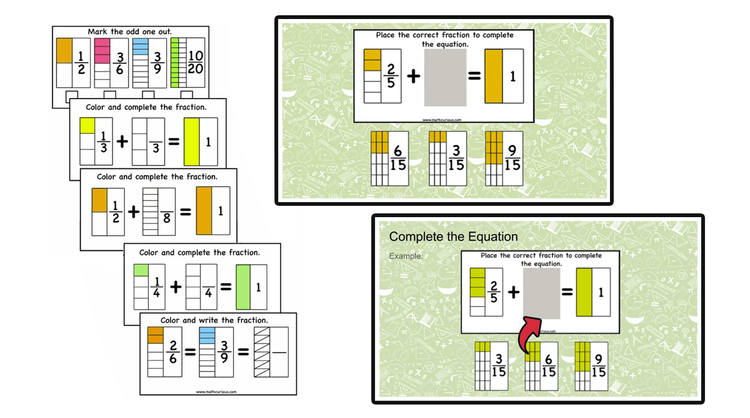Looking for quick, high-impact prompts that get students thinking, talking, and justifying? Check out this jumbo collection of Always · Never · Sometimes statements—a set of 144 statements for each grade 4-8 that ask students to decide whether a claim is always true, sometimes true, or never true—and prove it with examples or counterexamples.
Available in:
Print: ready-to-use task cards (answer key and explanation for each included at the back, you can choose to print only the front and have the students write their answer at the back. You get the complete answer key as well.
Digital self-check: interactive version with instant feedback

What it is
Each card/prompt presents a math statement (e.g., “The sum of two even numbers is even.”). Students choose Always / Sometimes / Never, then explain why. They’ll compare examples, hunt for counterexamples, and sharpen precision with vocabulary and properties.
Covers the following concepts (whichever apply for each grade)
Number sense
Operations
Fractions
Measurement
Geometry
Data & Graphing
Decimals
Algebraic Thinking
Data & Probability
Number Systems
Algebra
Percents
Statistics
Ratios & Proportional Relationships
Functions
Expressions, Equations, and Inequalities
Teacher support included: concise answer key with quick explanations.
Why teachers love it
Deep reasoning, minimal prep. One prompt = a full discussion.
Built for math discourse. (make sense of problems; construct arguments & critique reasoning).
Low floor, high ceiling. Every student can try an example; fast finishers can generalize or find edge cases.
Flexible formats. Works whole-class, small group, partners, or independent.
Where it fits
Use the printed cards or the digital self-check version for:
Math Talks / Number Talks (project one or hand out a few)
Warm-ups / Do-Nows (2–5 minutes)
Early finishers (grab-and-go basket or a device station)
Challenge/Extension (prove or disprove; rewrite to flip the truth value)
Centers/Stations (self-checking = independent practice)
Exit tickets (one quick justification)
How to use (quick routines)
Whole-class talk (5–8 min)
Show one prompt (print or projected).
Think time → private vote (A/S/N) → pair share.
Collect examples and counterexamples; confirm with the answer key (or digital feedback).
Record a class “Because…” sentence for your math wall.
Small-group/center
Put 6–8 cards in a bin with dry-erase sleeves.
Students write A/S/N + an example on the sleeve.
Flip for the key (or check on the digital version), revise, and initial.
Independent (digital self-check)
Students choose a prompt, submit A/S/N, and get instant feedback with a short explanation and a nudge to try an example or counterexample if needed.
What makes it useful
Instant feedback (digital): Students get the verdict and a concise reason, reinforcing correct thinking on the spot.
Justification first: Cards are designed to elicit reasoning, not just answers.
Counterexample power: Students learn that one counterexample can overturn a “for all” claim—foundational for proof thinking later.
Consistent language: Repeated use of always / sometimes / never builds precision and confidence.
Versatile pacing: Works in tight time slots or extended problem-solving blocks.
Pro tips & scaffolds
Post sentence stems:
“I think it’s Always because…”
“It’s Sometimes true when…, but not when…”
“A counterexample is…”
Challenge fast finishers: “Change one word so a Never becomes Sometimes.”
Track growth: 1 = claim only, 2 = claim + example, 3 = claim + correct explanation, 4 = generalization or counterexample.
Grade 4 Video Preview
Grade 5 Video preview
Grade 6 Video preview














